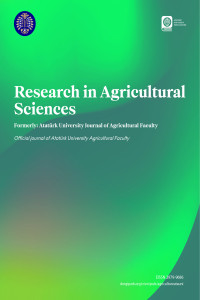About the Research in Agricultural Sciences
Research in Agricultural Sciences is a peer reviewed, open access, online-only journal published by the Atatürk University.
Research in Agricultural Sciences is a triannually journal that is published in Turkish and English with articles in January, May, and September.
Previous Title
Atatürk University Journal of Agricultural Faculty
ISSN: 1300-9036
EISSN: 2651-5016
Current Title
Research in Agricultural Sciences (2023-)
EISSN: 2979-9686
ABSTRACTING AND INDEXING
Web of Science-Zoological Record
CABI
EBSCO
ProQuest
MIAR
DRJI
TÜBİTAK ULAKBİM TR Dizin
China National Knowledge Infrastructure (CNKI)
CAB Abstract
COPYRIGHT
Research in Agricultural Sciences is an open access publication, and the journal’s publication model is based on Budapest Access Initiative (BOAI) declaration. All published content is available online, free of charge at https://dergipark.org.tr/en/pub/agricultureatauni. Authors retain the copyright of their published work in the Research in Agricultural Sciences. The journal’s content is licensed under a Creative Commons Attribution-NonCommercial (CC BY-NC) 4.0 International License which permits third parties to share and adapt the content for non-commercial purposes by giving the appropriate credit to the original work.
From January 2022 onwards, content is licensed under a Creative Commons CC BY-NC 4.0 license. The journal’s back content was published under a traditional copyright license however the archive is available for free access.
2024 - Volume: 55 Issue: 1
Research Article
Essential Oil Components and Yield Parameters of Artemisia spp.Creative Commons
Articles published in this journal are published under the Creative Commons International License (https://creativecommons.org/licenses/by-nc/4.0/). This allows the work to be copied and distributed in any medium or format provided that the original article is appropriately cited. However, the articles work cannot be used for commercial purposes.
Content of this journal is licensed under a Creative Commons Attribution NonCommercial 4.0 International License


